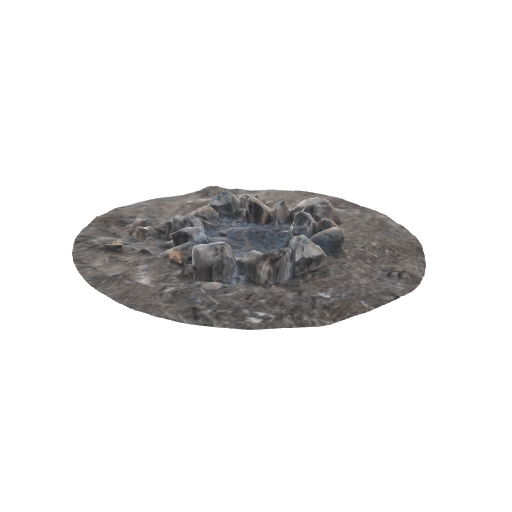Fire
Wolastoqiyik: motutuwakon
Mi’kmaq: pugtew
Fire is an essential element of nomadic and semi-nomadic lifestyles. It is used to cook and preserve food, make various objects and keep warm. Fire is also related to social bonding, rituals, and offerings.
There are several techniques for starting a fire, but the most common one involves rubbing two pieces of wood together. The first piece, called a fireboard or hearth plate, is hollowed out by a knife or beaver tooth and held flat on the ground. By quickly turning a second piece of wood—the bow drill—vertically, the friction heats the wood and produces a faint ember. The latter is used to ignite a bigger fire. Another technique, the “fire striker” or percussion fire making, involves striking two stones together to produce a spark. A flint or chert stone is often struck against a ferrous stone, such as iron pyrite or marcasite. Then, dried and ground leaves, lichens, bark, or wood shavings are used to kindle the flames.
Fires are commonly lit inside wigwams. Since the smoke only partially escapes through the dwelling’s ventilation slots, thus filling the space, the Algonquians must remain seated or lie inside the wigwam. Racks are also installed to dry or smoke meat over the fire.
Fire is sometimes even carried in travel bags. Mushrooms—the hoof fungus in particular—are used to keep the fire burning slowly when travelling. Typically, the women are in charge of fetching the wood, igniting and maintaining the fire for the food preparation. If no women are present, as during hunting expeditions, young men perform this task.
References
Origin: Digital 3D drawing
Sources:
Tremblay, R. (2002). Faire du feu: un geste humain essentiel [Making fire: an essential human activity]. In C. Gates-Saint-Pierre, & Y. Monette (dirs), Archéologie du Québec: vol. 4. Feu: Lueurs et Fureurs (pp. 20–26). Pointe-à-Callière; Éditions de l’Homme.
Pointe-à-Callière, cité d’archéologie et d’histoire de Montréal. (n.d.). Pierre à feu [Flint stone]. ARCHÉOLAB.QUÉBEC. Retrieved September 22, 2022, from https://www.archeolab.quebec/recherche/objet/216993
Archéophone: Expertise et éducation. (n.d.). Retrieved September 22, 2022, from https://www.archeophone.ca/arch%C3%A9ologue-expertise-en-arch%C3%A9ologie-%C3%A9ducation-et-animations-en-histoire-et-pr%C3%A9histoire
Laberge, M. (1996). Création d’une nouvelle iconographie sur les algonquiens du Nord-Est de l’Amérique à partir de données ethno-historiques datant d’avant 1760 [The creation of a new iconography of the Algonquians of North-East America using pre-1760 ethno-historical data] [Doctoral dissertation, Université Laval]. CorpusUL. https://corpus.ulaval.ca/bitstreams/ad9a212e-0edb-496f-abf3-1ab25c05f6b3/download
